What does modern stats analysis reveal about Aberdeen’s 1983 European Cup Winners’ Cup win over juggernauts Real Madrid? Does it match 40-year-old memories of how the final played out? We found out.
Thursday marks 40 years since the Dons’ 2-1 extra-time victory in Gothenburg.
In the intervening years, the mythology around one of Scottish football’s greatest-ever victories has grown – almost at the same rate data and statistics have evolved into a fundamental part of interpreting teams’ and players’ performances.
There is an accepted narrative around the Reds’ iconic extra-time victory which has solidified in the decades since the final.
It reads: A very talented Aberdeen side, reinforced by previous (sometimes difficult) European experiences, adapted far better to the wet conditions at the Ullevi Stadium and dominated Real, with far more and far stronger chances over the 90 minutes and additional half-an-hour, their fitness seeing them take a stronger grip on proceedings in the latter stages.
But do the numbers from our provider StatsBomb – who have watched the game back and meticulously collected the data from the final for us – back up this assessment of Aberdeen’s greatest night?
Aberdeen might have ‘battered’ Madrid – but had less of the ball
During our series of exclusive Press and Journal interviews to mark four decades since Gothenburg, legendary boss Sir Alex Ferguson gave an assessment of Aberdeen’s part in the showpiece game, where he recalled: “We actually battered them, we played them off the park and it could have been five or six.
“How the game ever reached the stage where we were into extra time is one of the great mysteries of football.
“It would have been a tragedy if we had lost, because we were so much the better team on the night.”
Looking at the stats, Fergie’s assertion the Dons “battered” their opponents should not be read as Aberdeen having all of the ball during the tussle, because they did not.
In fact, on the night, the Reds actually trailled Los Blancos significantly when it came to possession (40% to 60%) and in pressuring their rivals to regain possession (44 times against Real’s 57 pressure regains).
Aberdeen were also behind on tackles won (47 to 94), total passes completed (317 to 527), and pass completion percentage (72% to 80%).
Dons had far more chances than rivals
But the difference in the final was what Aberdeen did with the ball when they had it…
Real Madrid defender John Metgod suggested to The P&J the conditions on the night in Sweden were more suited to Aberdeen’s approach of getting the ball forward quickly.
The BBC commentators at the game accused Madrid of trying to be too “meticulous” in their play, given the wet weather on the night.
And the numbers show Real struggled to turn their possession into threat.
Aberdeen “battered” them, like Ferguson said they had, when it came to what counts – chances created.
Madrid, with lots of possession and passing, only managed three shots on target in 120 minutes of action, while the Dons had 10.
Fergie was right to feel Aberdeen should have scored more, according to StatsBomb, who rated the Reds’ expected goals (xG) for the game at 2.59.
The Dons, of course, netted two goals, through Eric Black – whose early finish was quickly cancelled out by Juanito’s penalty – and then John Hewitt’s iconic extra-time winner.
StatsBomb rated Aberdeen’s two goals as also being their two best chances in terms of the likelihood the players would stick the ball in the back of the net.
Perhaps interestingly, Black’s swivelling close-ranger was rated as an easier chance (0.69xG) than Hewitt’s 112th-minute header (which they awarded an xG of 0.44).
Both were near to the goal, but Black had the keeper to beat, while the flight of the ball meant Real keeper Agustin was out of the equation for Hewitt’s header.
According to the data-crunchers, the Dons’ next two best chances in the final were Gordon Strachan’s 53rd-minute shot at 1-1, rated as being worth 0.21xG, and Mark McGhee’s 114th-minute attempt to make it 3-1, rated the same.
Another effort, two minutes later, from McGhee was rated 0.17xG.
As you’ll see from the list below Black’s near-opener on the volley, which came a minute before he did net, was a put down as a relatively low-value opening – even though he managed to smack the ball off the bar – while the second-half header where he injured his ankle and was forced off (for Hewitt) was also rated as having no more than an outside chance of going in.
For Madrid, their penalty, awarded when Alex McLeish’s back-pass forced Jim Leighton to wipe out Santillana, naturally rated as their best chance – at 0.78xG.
After this, their next highest-rated chance had an xG of just 0.09xG – when Isidro got his head to the ball at a corner.
Aberdeen had seven chances in the game with a higher probability of going in than this Isidro effort, according to StatsBomb, so in one respect, Ferguson wasn’t wrong to think there should have been a larger gap between the sides on the scoresheet.
How necessary was divine intervention for Madrid free-kick at the death?
The much-talked-about late Madrid free-kick, in the 120th minute with the Dons leading 2-1, where Peter Weir prayed to God to intervene and force the ball wide?
StatsBomb, experts in chances which tend to – and tend not to – lead to goals, rated the set-piece opportunity at just 0.05xG.
So the Lord’s hand was never likely to be needed in Aberdeen making it to the final whistle with their lead intact and securing European Cup Winners’ Cup trophy glory.
These graphics (complete with key at the bottom) further illustrate the difference in quality between Aberdeen and Madrid’s chances in the game:
‘As the final progressed we were dominating more and more’
Aberdeen’s superior fitness – a focus of Ferguson and his assistant Archie Knox – was a key part of eventually getting them over the line in the final, the players will tell you.
This factor was suggested by both Neil Simpson, who told us: “We were fit as a squad, and when it went to extra-time, we knew we’d have the energy… I ran as much in the 120th minute as I did in the first.”
Meanwhile, legendary Dons skipper Willie Miller said: “As the final progressed we were dominating more and more.
“I think anyone watching the game will accept that we were the team on top.
“Going into extra-time there was no doubt in any of our minds that we would win the game.
“It was wave after wave of attack.
“There was only going to be on winner – it was just a matter of could we get the breakthrough goal… then John Hewitt scored.”
While we do not have access to the distance run by both sets of players in the game, what we do have from StatsBomb is this race chart below, which shows how Aberdeen’s threat and grip on proceedings increased as time wore on, especially during the additional half-an-hour.
It would seem from this the players were right about outlasting Madrid. At least it is clear they were able to turn the screw increasingly as the minutes ticked by.
If we forget about goals actually scored, you can see from the lines representing both sides that, from the start of the second half onwards – and especially throughout extra-time – the multiplication of Dons chances compared to Madrid’s was pronounced.
By full-time, the difference in the sides’ threat over the piece reached a point where StatsBomb reckon Aberdeen had a 65% chance of coming out on top, with Real Madrid’s quality of chances meaning they were rated as having just a 15% chance of taking the trophy back to Spain.
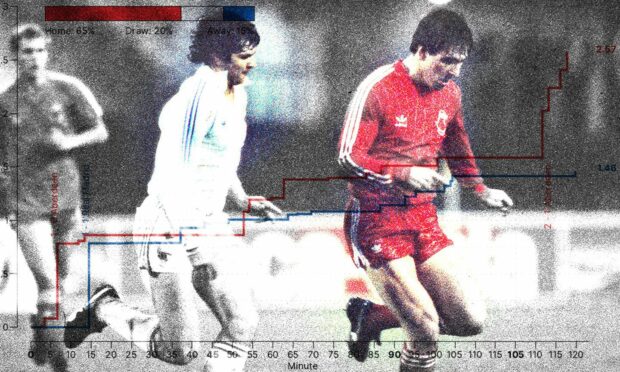
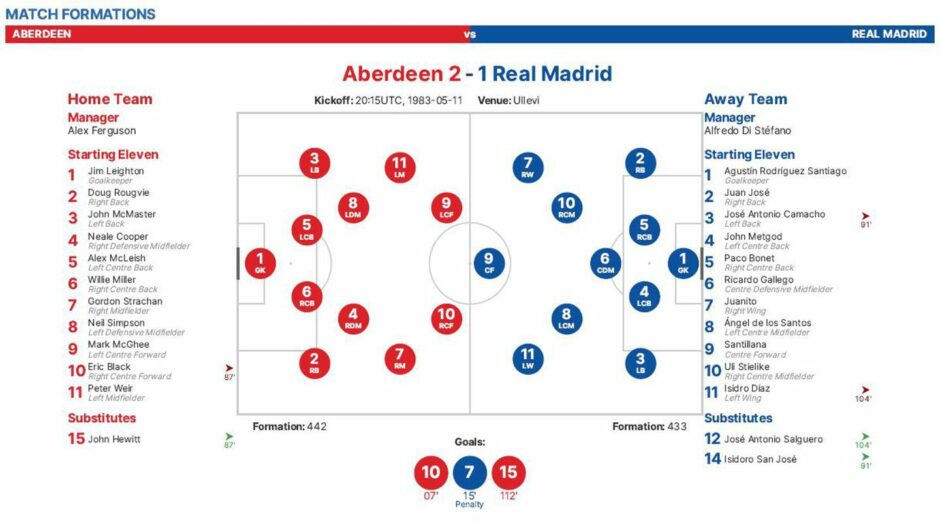
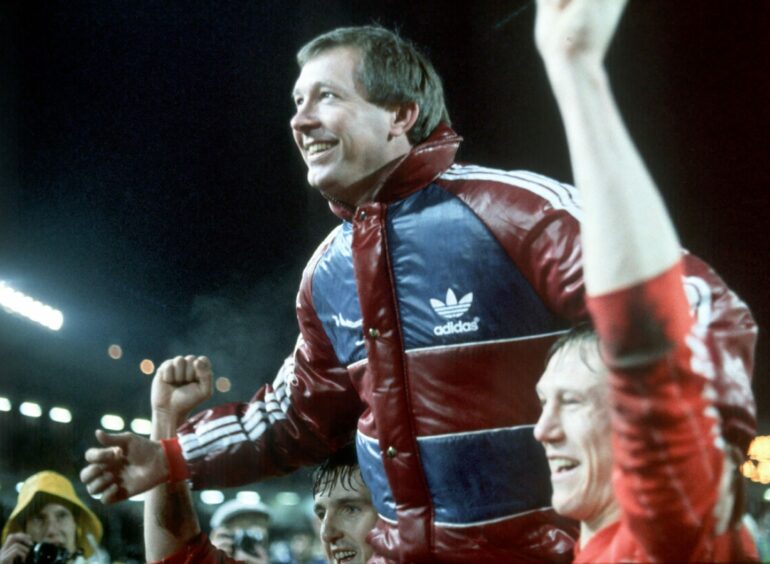
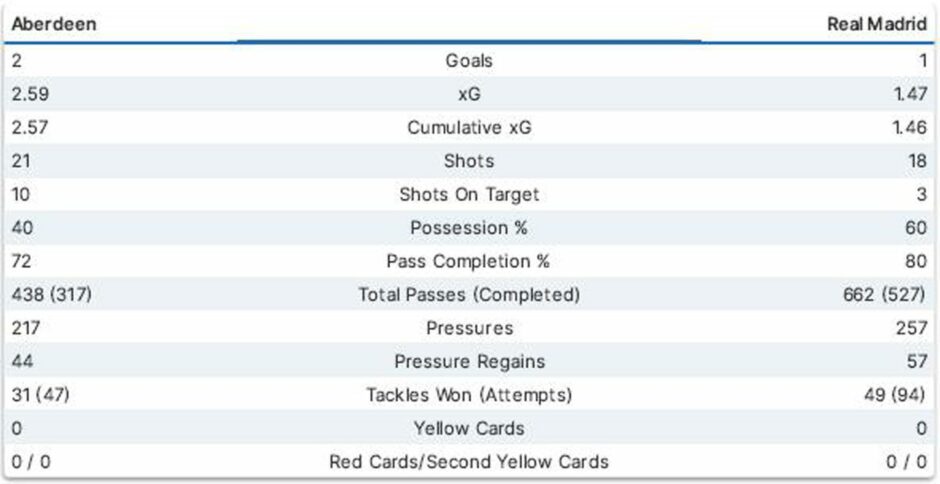
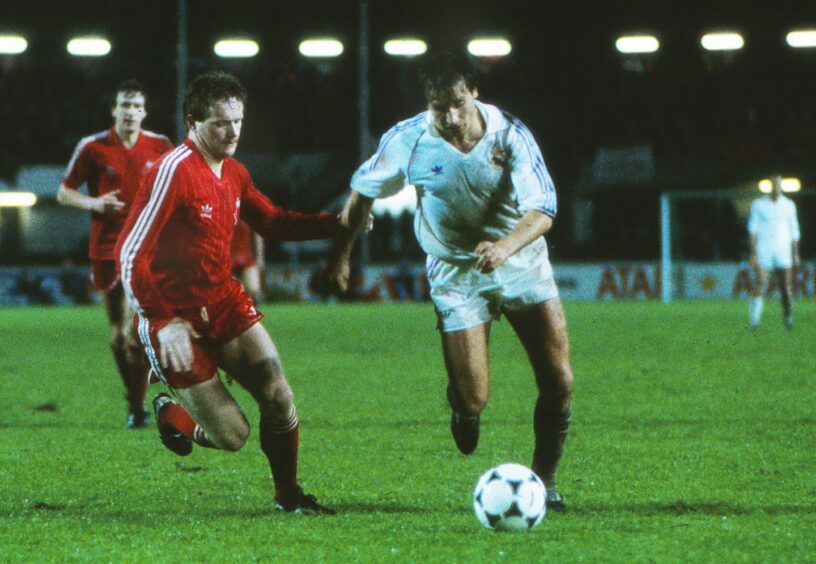
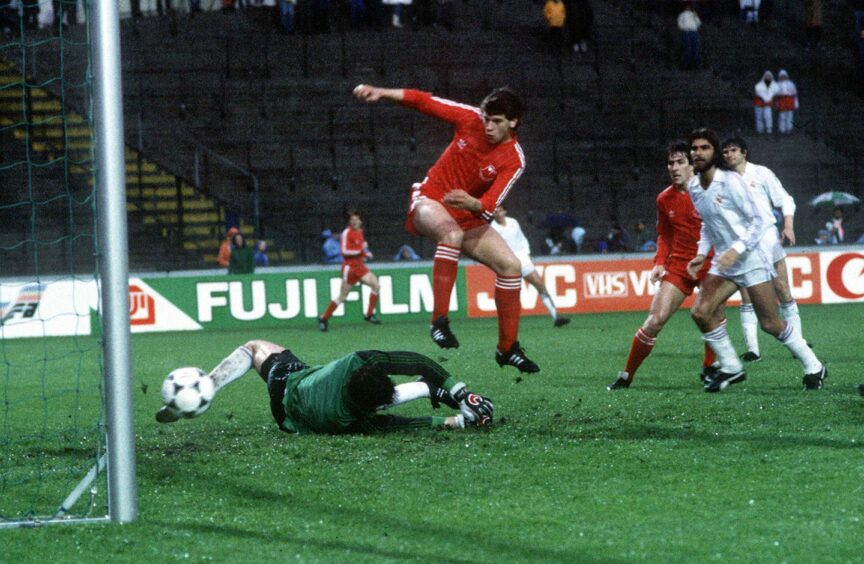
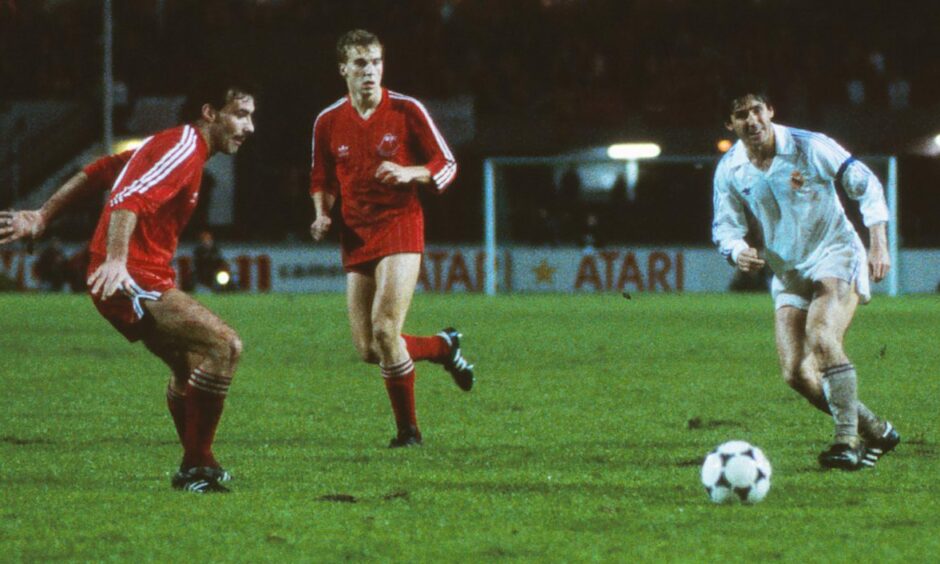
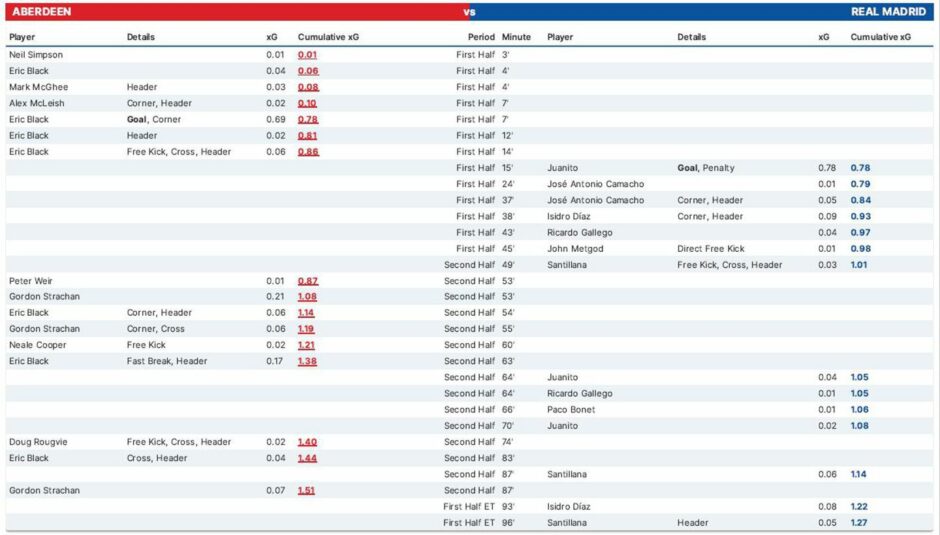

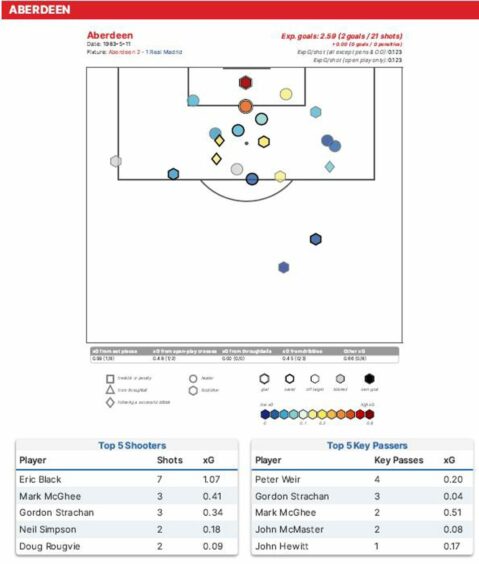
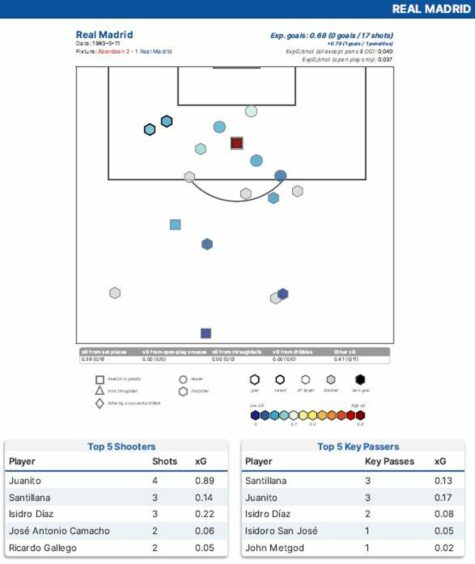
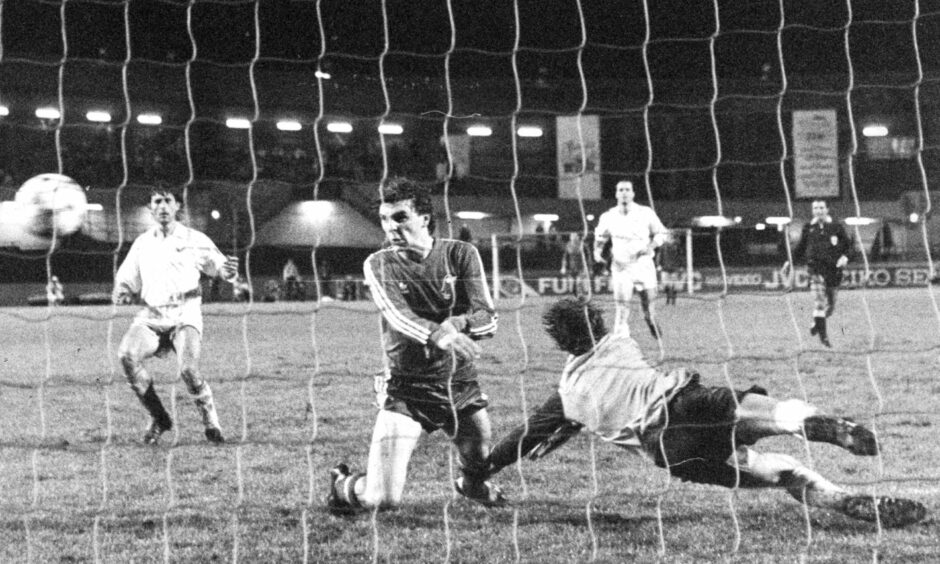

Conversation